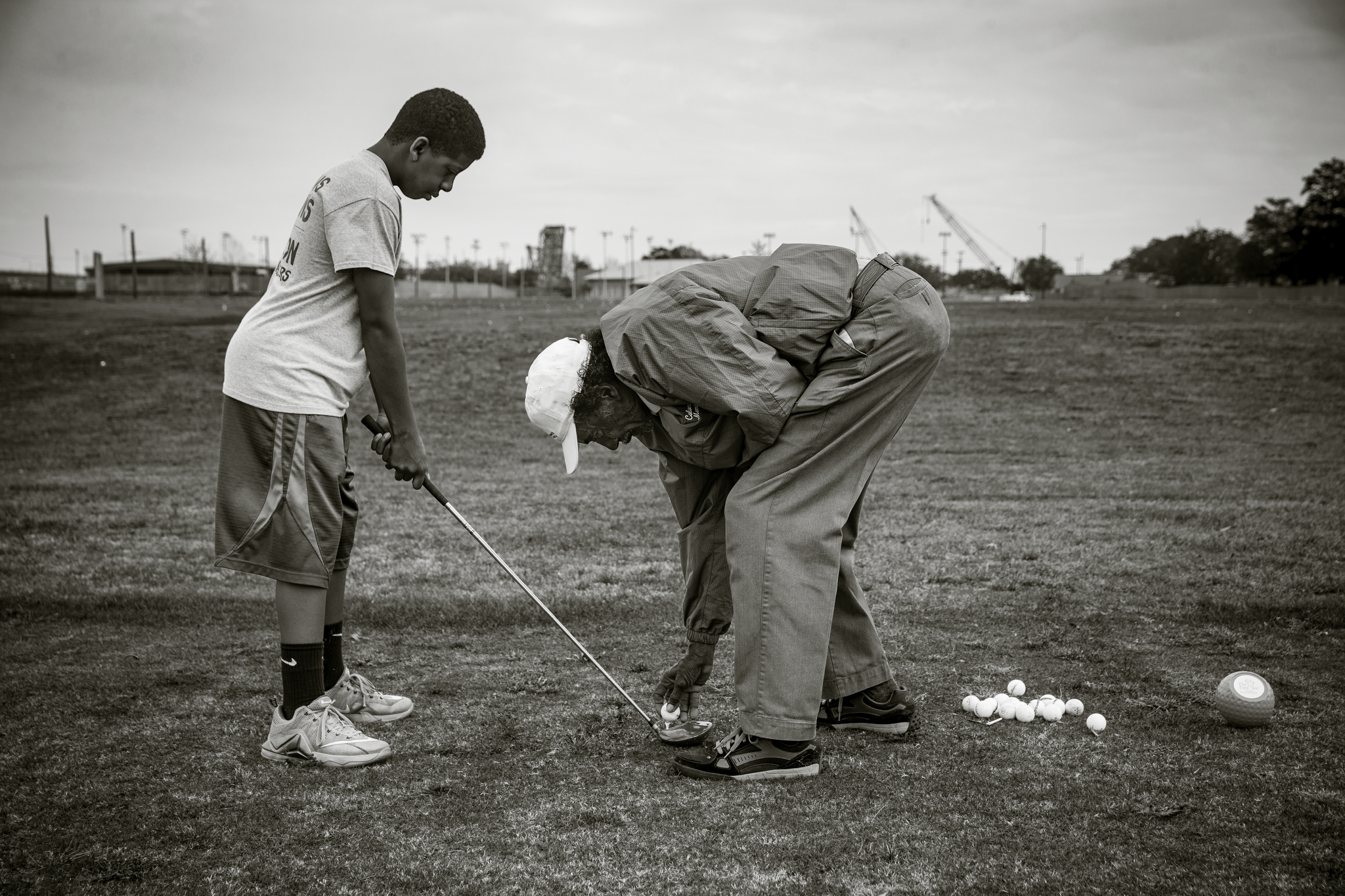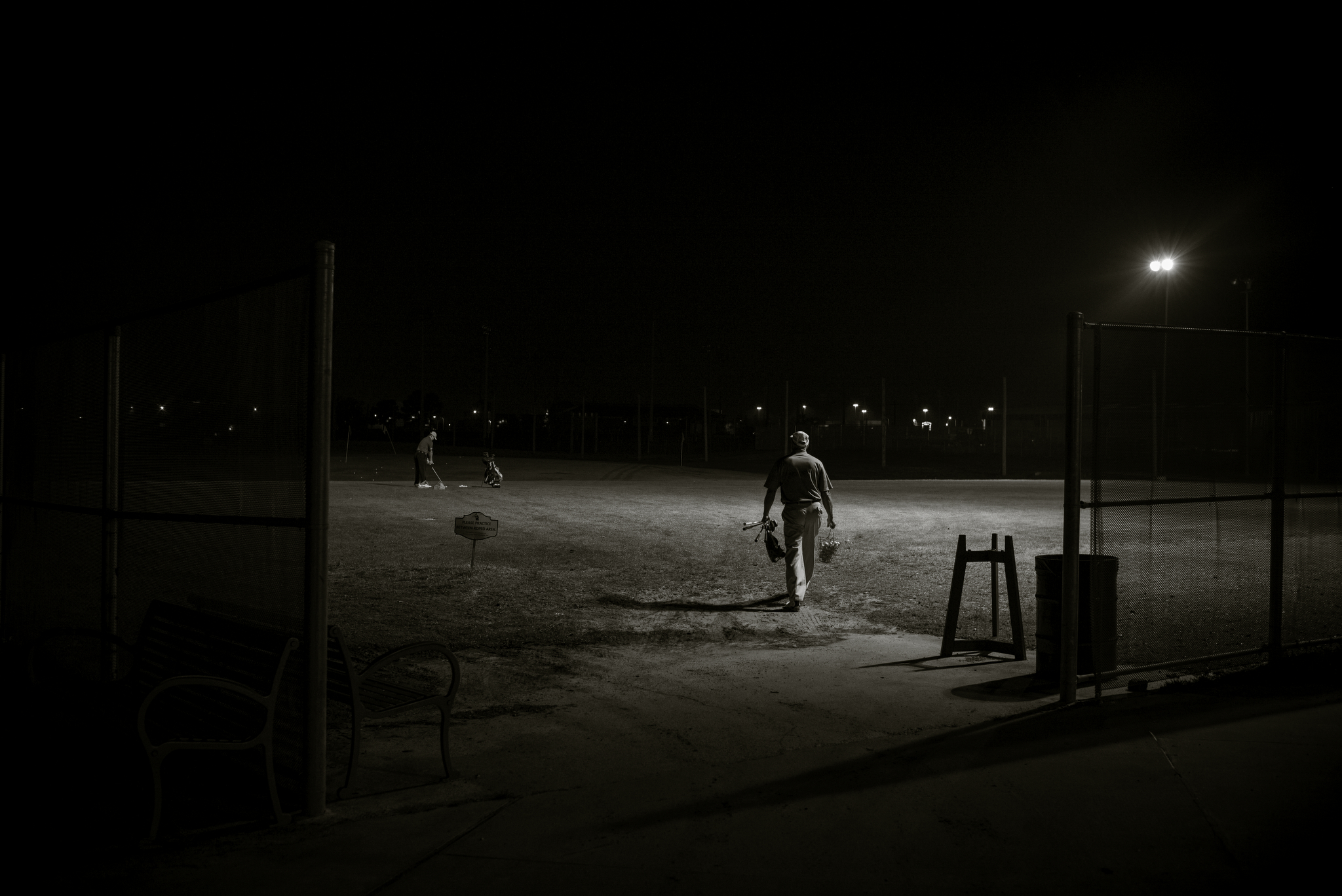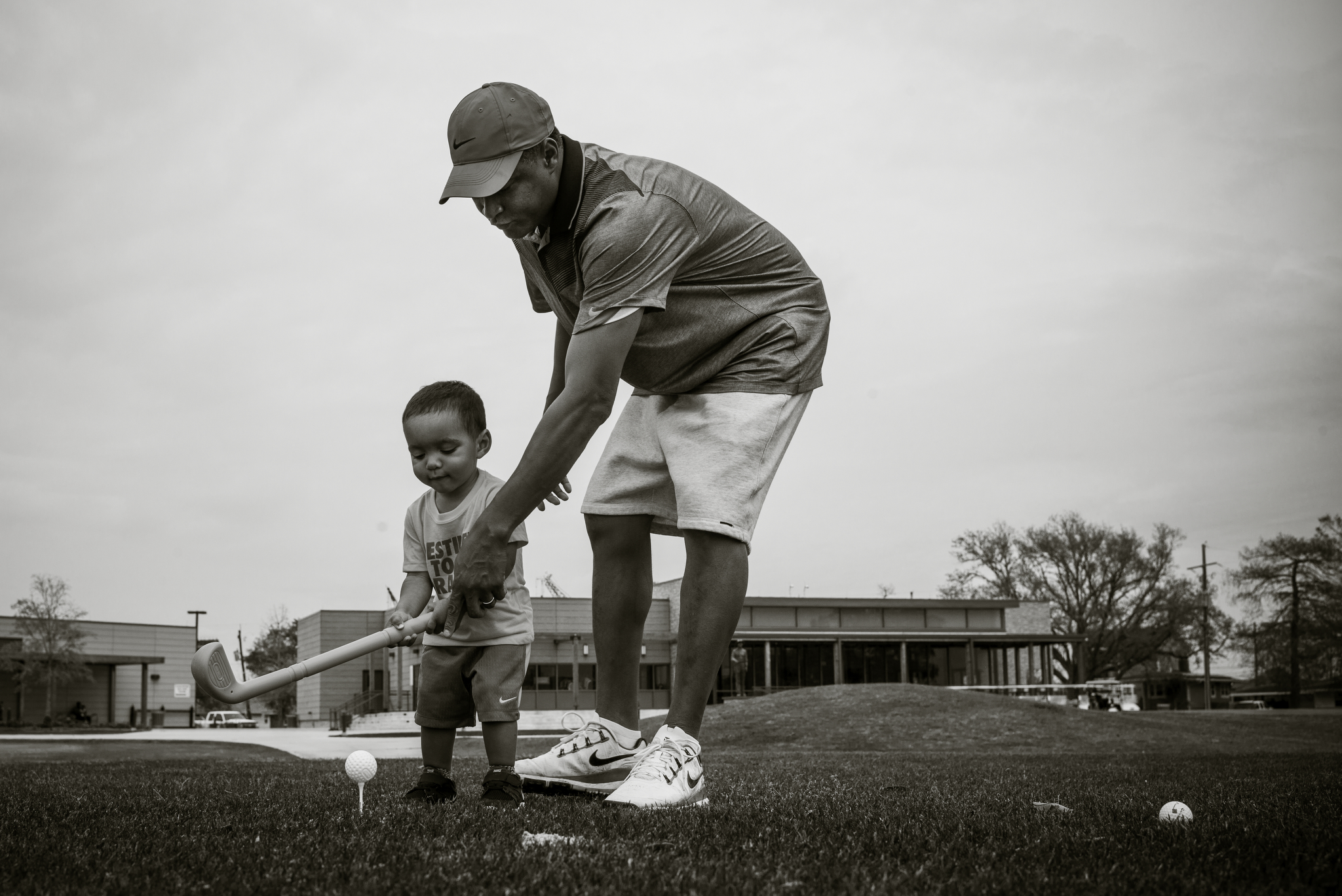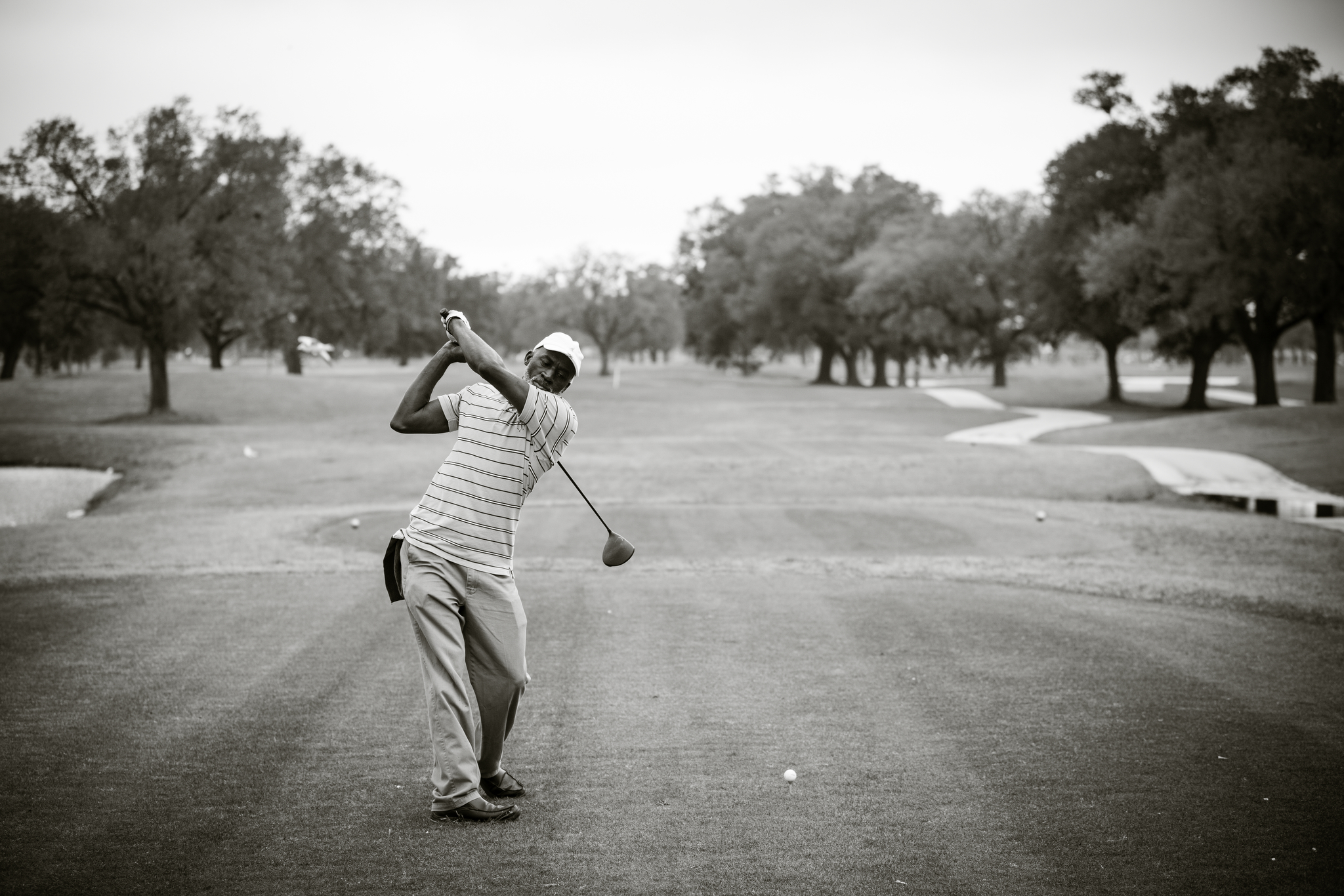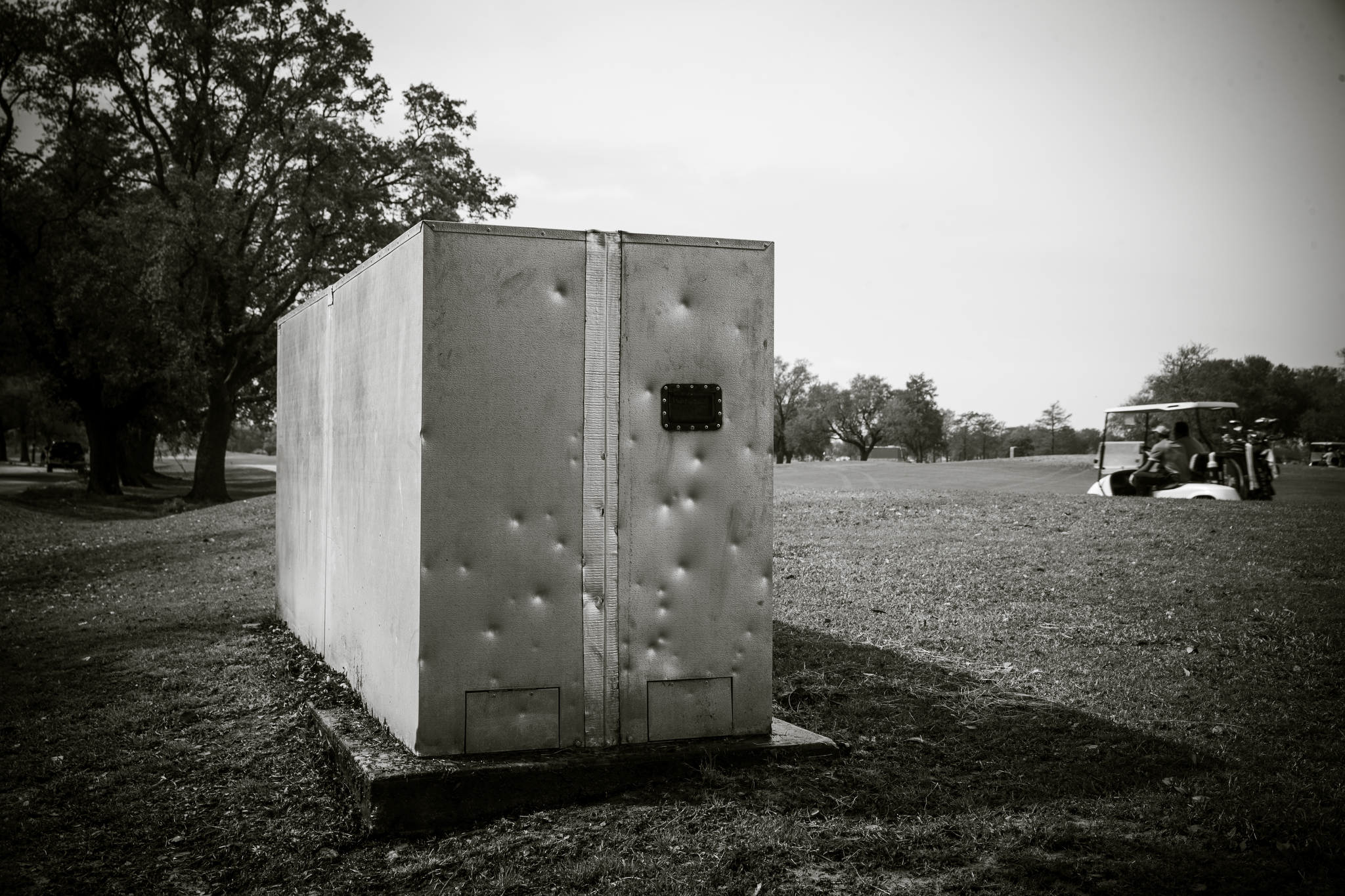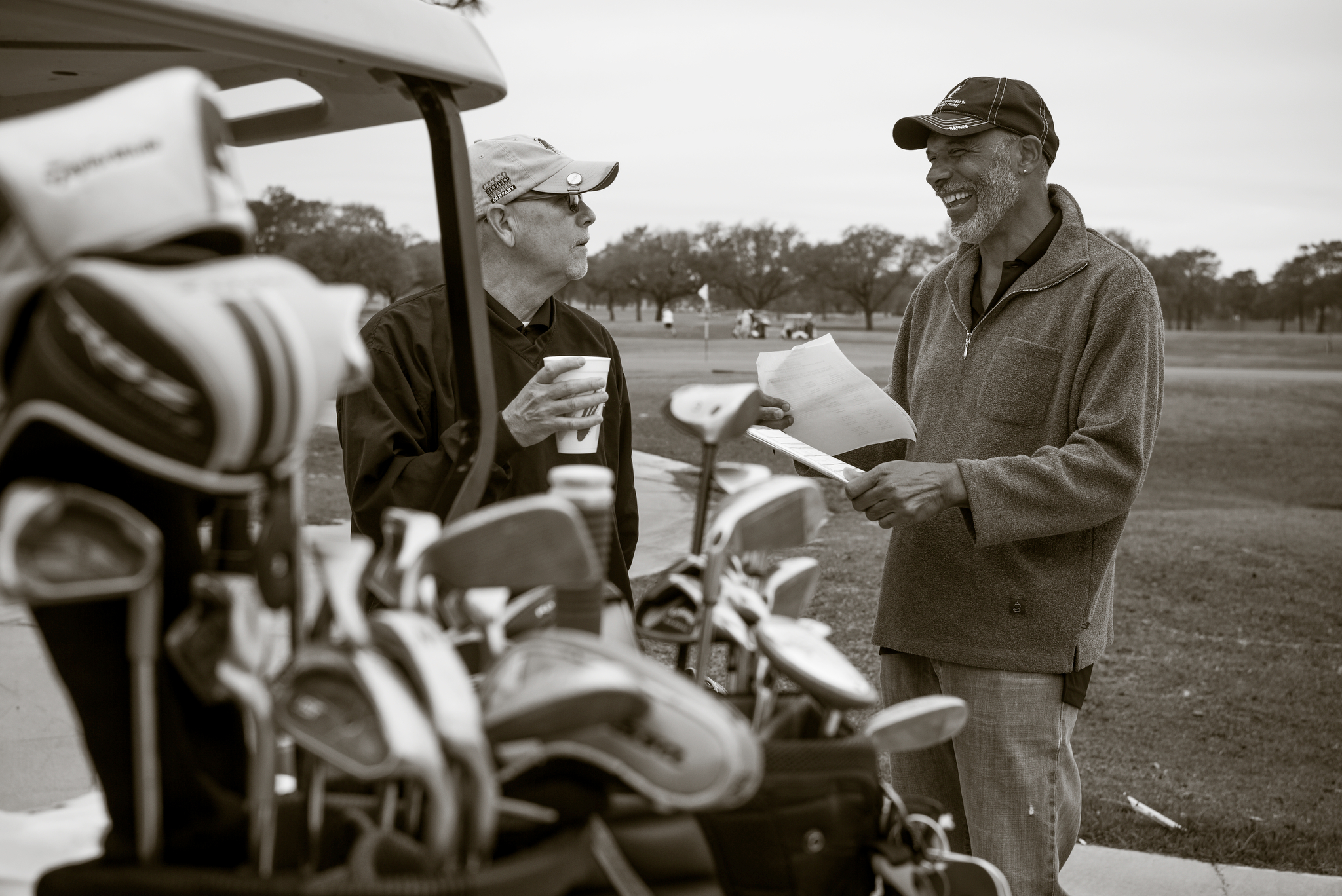Meet Joe Bart

I’ve been fortunate when it comes to golf. I grew up learning the game at a private course on Long Island, and when I began working as a magazine photographer I was able to combine the appreciation of the game that I acquired there with a career that I loved by photographing the sport at its highest levels. Over the past 20 years I’ve been lucky enough to document the game being played on the great American courses that have hosted U.S. Open championships, the storied links of the Open rota, and other fabled U.S. venues whose names are familiar to everyone. So when a friend at the USGA sent me a video about a little muni I’d never heard of, tucked, as if nestled into an asphalt horseshoe, into a neighborhood on the shore of Lake Ponchartain in a part of New Orleans I never knew existed, and asked me to produce a photo essay about it, I must confess to thinking not much would come of it. I never expected this little out-of-the-way track to have such a great story to tell.
“Joseph M. Bartholomew, Sr. Municipal Golf Course” is a mouthful—perhaps that’s why regulars simply call it “Joe Bart.” But the lengthy name encapsulates a story that touches on everything from playing golf to course architecture to race relations to natural disasters to navigating the politics of city government. It’s a story that involves community building and re-building, and remembering a man who helped build that community through golf.
Born 1881, Joseph M. Bartholomew was caddying at Audubon Golf Club in New Orleans by age 7, studying and copying players’ swings so well that he eventually shot a course record 62–presumably on the one day a week that blacks were allowed to play the course. Audubon head pro (and 1908 US Open champion) Fred McLeod took the young Bartholomew under his wing, promoted him to equipment manager, and later to greenskeeper. The members at nearby Metairie Country Club were so impressed with his ability that they hired him away and commissioned him to build their new course—but only after sending him east to spend a few years studying architecture under Seth Raynor.
Having been fully immersed in the design theories and principles of Raynor, and, by extension, Raynor’s hero C.B. MacDonald, Bartholomew returned in 1922 and build the new Metairie. It’s hard to tell sometimes, when dealing with mostly-oral histories, where the apocryphal begins and ends, but legend has it he worked only at night so others couldn’t see, and therefore steal, his ideas.
Regardless of the level of stealth involved in its construction, the course would open to accolades from members and designers alike. But the black man who built it would never be allowed to tee a ball up there. In fact, there weren’t many, if any, courses that blacks in New Orleans could play regularly. So in 1956, after having spent several decades parlaying his course design endeavors into an extremely successful construction and heavy-equipment business, Bartholomew changed all that. He built one for them.
After a night of rain, golfers get ready on the first tee early on a Sunday morning.
Joe Bart regular Burnell Scales, 71, grew up in the same neighborhood as Bartholomew, caddied at Audubon as a kid, and, like most black residents, had nowhere to play. “We had to make our own golf courses. We’d go down to the levees, or dig some holes in our neighborhood. That’s where we would practice our game.”
Others sought out more formal practice conditions. Joe Hall, 75, remembers sneaking on at Metairie, where he was a caddie. One member had an interesting method of deterrence. “He had two bulldogs, and if he saw us he’d turn them loose on us. We’d have to jump into the canal to get away.”
Hall is the vice president of the Friends Of Joe Bartholomew, an organization dedicated to the memory of its namesake and responsible, among other things, for installing a larger-than-life statue of Bartholomew between the clubhouse and the course. “Mr. Joe, his thing was to build a course for us to play. We didn’t have opportunities.”
Bartholomew saw that opportunity in the middle of the Ponchartrain Park neighborhood. He designed the course himself, using his equipment to fill in what was a swamp, hiring locals to do the construction work and bringing in a black head pro, John Roux Sr., to run it. Scales would go to the site to watch the construction. Bartholomew, he recalled, was out there every day.
People like Hall and Scales spread the story of the man, but the story of the course and the community it continues to build is a generational matter, too. Frank Landry — a regular who has, by his estimation, “been coming out here for 60 years—and I’m only 66 years old!”— has memories of his father playing in all the big money games at Ponchartrain Park (it wouldn’t be renamed for Bartholomew until after his death in 1971) in the 60’s. Frank remembers those days fondly, talking to me one day before he heads out for a round. “Alvin Adams, Ducky Gilbert, Charlie Harris, some guy named Buster—I never knew his last name. Those guys, if they were playing during this time they’d be on the tour. But at the time that just wasn’t going to happen. They would have been plus-two, plus-three handicaps, but at that time if you were a black man you couldn’t get one.”
It seems everyone came through Ponchartrain Park, and It was known for exhibitions and barnstorming. Daniel Porter, who has been playing at Joe Bart since the 1970s, recalls that once a year guys like Nate Starks, Charles Johnson, and Bobby Stroble would stop at the course, taking on all comers. “This is where we got an opportunity to take a swing at the pros.” He smiles. “I’m not being braggadocious, and I’m too old to lie, but I got a check out of every tournament.” Porter, who still volunteers as a starter and a ranger in exchange for green fees, also regularly coaches at Joe Bart’s First Tee clinics, held on the back of the driving range at a newly-installed youth practice area.
Daniel Porter, a Joe Bart regular since the early 1970s.
Young golfers during a First Tee of New Orleans event at the new facility at the back of Joe Bart’s driving range.
It seems as though this generational handoff will continue. One Saturday morning, I’m waiting on the tenth tee to photograph players hitting with the clubhouse in the background. After the rest of his foursome hits, Representative Cedric Richmond, of Louisiana’s 2nd Congressional District, tees up a ball for his year-old son Ced, who is riding along in his dad’s cart for the round. Ced takes a mighty whack at the ball with a plastic club, and gets it airborne.
Congressman Cedric Richmond with his year-old son, Ced, on the tenth tee.
Richmond is a regular at the course when he’s in from Washington. Today he’s playing with Tom Martin, 66 (left), who used to shag balls on the range for 25 cents as a kid. “This was the first African-American subdivision in America,’ notes Martin, who has been working and playing at the course since he was 8. ”All middle class. You lived here if your momma was a schoolteacher or worked for the post office.” Another member of their foursome is Rickey Jackson, the former Saint and NFL Hall-of-Famer who’s known simply as “Linebacker” at Joe Bart. Jackson, a burly bear of a man (that’s him in the white shirt in the photo below) with an upright golf swing that can’t possibly inspire the kind of fear in opponents that seeing him across the line of scrimmage once did, is the driving force behind the course’s regular Thursday money game.
Ricky “Linebacker” Jackson, second from left, and others discuss some local rules for the week’s big money match.
Sitting in his cart at the first tee, Levy Bouligny, a retired postal worker who, at age 74, volunteers as a starter, recalls that “In the ‘50s, you could play at City Park one day a week. This was the only place you could play [every day]. After President Johnson signed the Civil Rights Act we were able to go to City Park, but you still came here for the camaraderie. All the guys I knew as a teenager, they were playing out here.”
And they still are.
The golf course Joe Bartholomew built wasn’t just part of the neighborhood. In some ways, it became the neighborhood.
After Hurricane Katrina, Ponchartrain Park—the neighborhood—was under 10 feet of water. The course, overseen by the city’s Department of Parks and Parkways, was in ruins. Ann Macdonald, the department’s director, fought to get it rebuilt.
“People were looking at us like, why are you worried about this golf course? We wanted to provide some sense of normalcy. If you want the golf course to come back, you have to have the neighborhood. But if you want the neighborhood to come back, you have to have the golf course. It wouldn’t have brought any life or spark to that neighborhood if you didn’t have the golf course. They went hand-in-hand.”
Across the street from the second tee, the Ponchartrain Park neighborhood still shows signs of Hurricane Katrina’s wrath over a decade later.
After passage of a $13.5 million bond package, work began.The greens were redesigned—Emerald bermuda was installed and, at least according to the long-timers, the course became a bit more inviting as Bartholomew’s original small, raised, severely sloped and contoured Raynor-inspired greens were mitigated and enlarged somewhat, mainly with a nod to agronomy and trimming maintenance costs. The storm removed dozens of trees from sight lines that were intentionally deceptive, but the wide fairways of the original routing remained. There’s now a First Tee facility at the back of the range, complete with practice greens and tees. The course reopened in 2011; in 2014 a new $4.5 million clubhouse replaced the trailer the course was operating out of.
Since then, the quality of the course and Macdonald’s desire to make Joe Bart “available to rank-and-file golfers” (witness the weekend $40 green fee, including cart) have contributed to a resurgence, with several golf clubs now using it as their home base. The number of rounds last year topped 27,000.
“White folks knew, but white folks didn’t come back here,” say starter Eric St. Julian—who also has a generational attachment to the course: his father, a regular, died after being struck by lightning in the first fairway. He points to the statue of Joe Bartholomew that stands watch over the 18th green, where black and white golfers alike finish out their rounds. “But what he did for black people benefitted everybody. We all need heroes. And that’s what we’ve got there.”
St. Julian walks over to the next group waiting near the first tee—Andrew and Katie Schneller, in town from Boston, her father Jim Friel, and her brother Dan, whom the trio are visiting for Easter. He inspects their greens fee receipts, checks them off against his list, and sends them on their way.
“Play well,” he says. ‘And if you don’t play well, have a good time anyway.”
A quick editorial note… This piece was originally produced for the United States Golf Association, and you can find the original version of it on the USGA’s website. All original content ©USGA/Darren Carroll.

